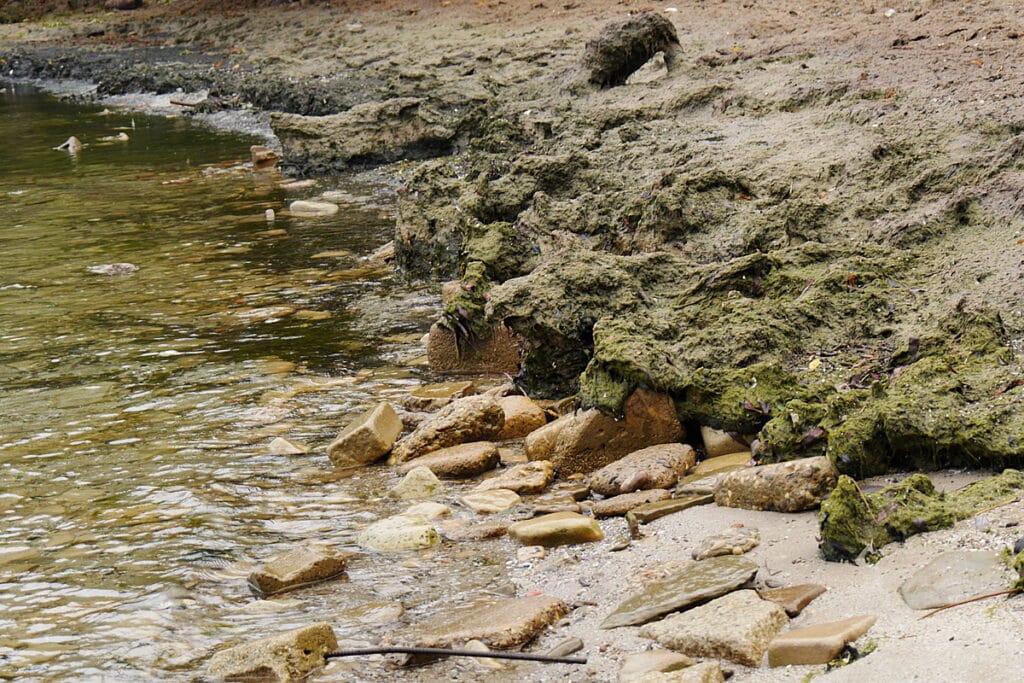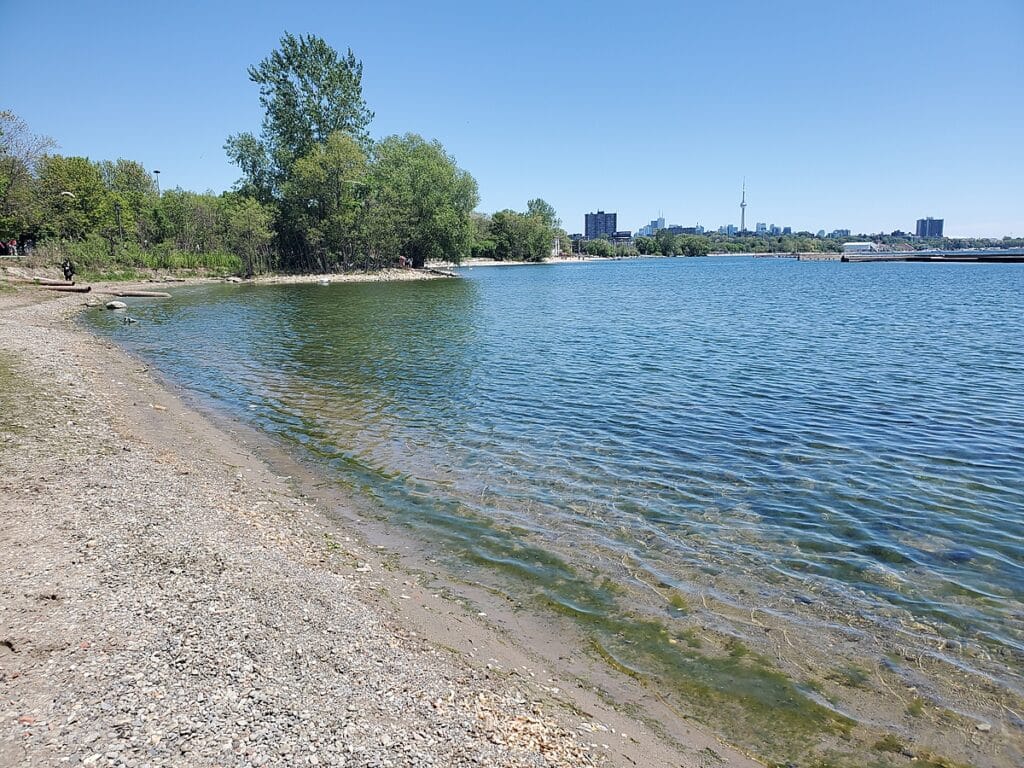Cladophora in the Great Lakes, and what to do about it
Cladophora is a native algae species in the Great Lakes. While it is not invasive, it certainly feels like an annual summerly invasion when this stinky, slimy green algae shows up on the shorelines of the lakes we love.
What is Cladophora?
Cladophora is a hair-like green algae that can live for three years or more. It grows on hard surfaces like rocks, timber, and shells and can even grow up to 10 metres or lower below the surface in clear lakes.

Why is Cladophora a problem?
When Cladophora dies off, it breaks away from the hard surfaces where it initially grows and washes up on shorelines in mats. This is when it really starts to stink! Cladophora mats on Lake Erie beaches can accumulate to knee and even thigh height. The algae carry aquatic life, such as crustaceans, which then attract seagulls and other waterfowl. Foul odours are then amplified even further by these birds’ droppings!
Cladophora is not toxic like blue-green algae (cyanobacteria). However, it still creates many problems in the Great Lakes, especially in hotspots like Lake Erie. It can carry E.coli (a fecal coliform bacteria) and other bacteria, posing a health risk for beachgoers. However, the more urgent issue with Cladophora is that it impacts freshwater ecosystems, ruining beaches and recreational water activities. People find they can’t swim or even go to the beach due to the smell and volume of algae on beaches and in the water.
Cladophora can also impact water systems, clogging water intakes.
The algae impacts commercial and recreational fishing as well.
Nuisance algae
Cladophora earned the name “nuisance algae” due to its increasing presence and impact on freshwater ecosystems in the Great Lakes. While it has been around for as long as we have records in the Great Lakes, its biomass increased dramatically during the 1950-1970s during what is known as the ‘eutrophication era.’ Implementing the Great Lakes Water Quality Agreement (GLWQA) and joint efforts in the US and Canada to mitigate pollution and implement nutrient control did help reduce Cladophora for a time. Still, over the last decade, the algae has again become prolific in the Great Lakes. Lake Erie, Lake Ontario, and Lake Michigan are particularly susceptible, but Cladophora is increasingly a problem in Lake Superior and Lake Huron too.

Why is Cladophora so prominent in the Great Lakes?
As mentioned, Cladophora is native to the Great Lakes. However, its presence dramatically increased during the 1960s and 70s, mainly due to human activity in agriculture and industry. Tighter restrictions on pollution helped reduce phosphorus levels, and there was a decline during the late 1970s. In fact, these types of algae blooms were largely absent in the Great Lakes during the 1980s and 90s.
The leading causes of the increase in Cladophora in the Great Lakes: nutrients, invasive species, and climate change
1. Nutrients, namely phosphorus
Phosphorus is increasingly making its way into the water from runoff from lawns (fertilizers), farms, urban centres, and storm and wastewater. Old and failing septic systems also contribute. Warming waters paired with the increased availability of nutrients created conditions where the algae can thrive.
Invasive mussels (zebra and quagga) arrived in the Great Lakes in the 1980s. This invasive species spread aggressively through the lakes and made significant impacts on the ecosystems. The mussels made the freshwater systems much clearer due to their filter-feeding. Clearwater makes it easier for Cladophora to grow, thanks to increased sunlight. Further, researchers found that since their arrival, mussels have increased the depth of the clarity of the water. In other words, the algae can grow deeper in the water thanks to the increased transparency- in some instances by a factor of 5. As if that weren’t enough, mussels also release phosphorus, which feeds algae. Finally, mussels also provide a hard surface that the algae can cling to and grow.
3. Climate change
We can expect climate change to impact the growth of Cladophora in the Great Lakes, but this isn’t well studied yet. We’ve just had the warmest decade on record, which saw reduced ice cover on the Great Lakes during the winter and longer growing seasons. Climate change in the Great Lakes also leads to more severe weather events, such as 100-year storm events, which have intensified storm runoff. The cumulative effects of these changes on Cladophora need to be better studied. Still, we can expect increased nutrient loading and longer growing seasons to contribute to nuisance Cladophora.

What you can do to help
As this is a Great Lakes-wide problem, we need to monitor the situation and address the causes of the increasing algae.
Reduce nutrient runoff
Phosphorus management remains the most appropriate course for reducing nuisance levels of Cladophora growth. You can help reduce phosphorus in agriculture and urban runoff in these ways:
- Fertilize your lawns, gardens, and farms responsibly
- Pick up your dog poo, and dispose of it properly
- Dispose of garden clippings responsibly
- Direct your downspouts to your garden or yard, not the street
- Maintain your septic system
- Wash your car at the carwash
Help monitor Cladophora
If you’re out monitoring, you can consider adding Cladophora monitoring and reporting to your work.
- Report Cladophora as an issue using the Water Rangers website.
- Join a local initiative monitoring Cladophora volumes on beaches and shorelines.